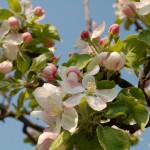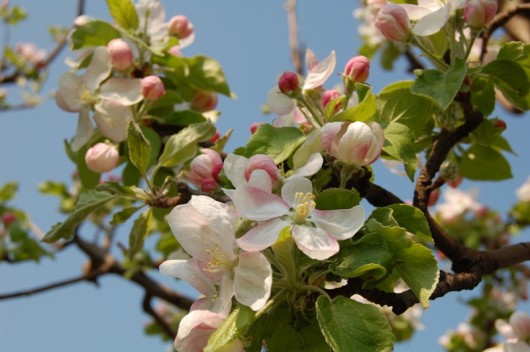How To Grow Apples At Home

If you really want to make a 100% your own apple juice then you need to start by planting some apple trees. This is a short guide that will tell you the basics of planting and growing apples in your own garden.
Apples From Your Backyard
There is nothing like a freshly picked apple from your garden, and despite the common belief that they are hard plants to grow, all you need to master is a few basics and you will soon have a tree or even a whole orchard of them that will give you fruit season after season without fail. Like any other fruit tree, you need to know the best climate , the best species, and when best to plant it so that it can thrive and be ready to fruit just on time. Those are the things that we are going to explore in this article.
The Best Climate For Apples
Let’s first have a look at where apples grow best. There is no standard climate for apples because there are so many different varieties, and most of them were developed to thrive in particular climates. For the sake of this article, lets assume that you want to grow an apple tree in the temperate zone where you get the 4 seasons in a year; winter, spring, summer and autumn.
Apples will thrive well in areas that have moderately cold winters and mildly hot summers. Apples are naturally sun fruits if you look at their history and origins, but because of the adaptations that they have acquired as they have been bred, there are many species now that need a hibernation period. During winter, they prepare for new growth when it will be hotter. If you live in a place that has extremely cold winters, you may find that your apple trees are dwarfed; its because it gets so cold that some cell activity dies during the cold season, so that when its hot, they tree really doesn’t have much to grow on.
In the summer, a minimum of 6 hours of sunshine is enough. Lately, temperate climates are getting hotter and hotter summers and these may affect the apple tree as it has to struggle to retain enough water for proper cell circulation, budding and fruiting. If you are experiencing an extremely hot summer, here is something that you can do to make sure that your apple tree has enough water to sustain itself.
Apples In Hot Summer
Get some old, tall bottles, like wine bottles and fill them with water. Dig some holes around your tree, tip over the bottles and leave about ¾ of them up in the air so that you can see the water as it is absorbed by the soil around the tree. The number of bottles that you will need will depend on how big your trees is and how hot the weather is, and you can add more if you notice that the soil around the tree is drinking up the water very fast. Each time you notice that a bottle is empty, fill it again and tip it into the hole. It’s a great way to keep your apple tree well watered and save water at the same time (compare it to using a hose or a sprinkler system). It also ensures that the tree absorbs water on demand.
When To Plant Apple Trees?
The best season to plant an apple tree is in early spring, although this will vary depending on the climate where you live and the species that you are planting. In some places, and with some species, it’s best to plant in early winter. To be sure, do some research on the type of apple tree that you want to plant and find out when it should be planted.
Apples grow pretty fast, but they will slow down as they age – they can live to be as old as 200 years. The trees need a lot of water right after planting to make sure that they root firmly in the soil and that they get enough nutrition. You can add some compost or manure to make sure that the soil is healthy.
Apple Tree Pruning
You’ll also need to prune regularly to allow for new growth and new buds. Since this is not the place to go into such detail when it comes to growing apples – look for apple pruning guides on the Internet.
How Do You Know If Apples Are Ripe?
Most apple species will ripen enough for harvest when the weather turns warmer. Let them get ready enough to fall freely from the tree so that you don’t get tart apples. Once you notice that they’re falling, use the ones that you pick up to compare to the ones still on the tree and you can pick the ones that look like the fallen one; not all of them will ripen at the same time.
